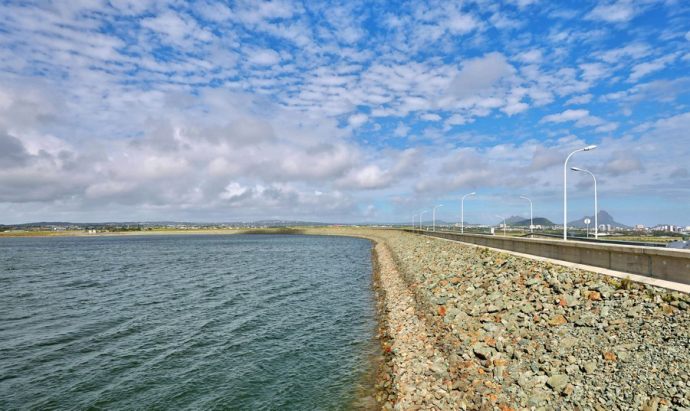
PORT LOUIS, July 30 (Xinhua) -- The pristine beaches in the Indian Ocean Archipelago of Mauritius have always fascinated well-heeled foreign tourists and a China-built mega dam that was launched this June has added another sparkle to the country's timeless beauty.
The Bagatelle dam, which is located 22 km southeast of the Mauritian capital of Port Louis and has an elevation of 350 to 400 meters, is surrounded by picturesque sceneries like expansive sugar cane plantations, which happens to be one of the country's main foreign exchange earners alongside tourism.
Nowadays, the image of the dam is a spectacle to behold and local people are keen to take a leisurely walk in its vicinity to enjoy the cool breeze.
The dam is expected to benefit 20 percent of land mass and 30 percent of the population in Mauritius while enabling the capital of Port Louis and its surrounding areas to meet its long-term water needs by 2050, said Zhao Xudong, deputy manager of the Bagatelle project, in a recent interview with Xinhua.
The project was built by the China International Water & Electric Corporation (CWE), a wholly-owned subsidiary of the China Three Gorges Corporation, which was the first state-owned enterprise of the Chinese hydropower industry to take part in international economic cooperation initiatives.
"As the first large-scale water project in Mauritius that was financed by the Chinese government and successfully implemented by Chinese companies, and the only large-scale water project initiated in the last 15 years, the importance of Bagatelle dam is self-evident," said Zhao.
Ameenah Gurib-Fakim, the former president of Mauritius, once said the China-built dam heralded a golden era of abundant water supply in fast growing Port Louis and its adjacent regions.
"Thanks to Chinese friends for building this great dam for us. It will make thousands of our citizens no longer worry about where to obtain clean drinking water," said the ex-president of one of Africa's most robust economies.
The completion of Bagatelle dam, described as a "grey miracle in the pearl of the Indian ocean," marked a critical milestone in Mauritius' quest to modernize its water supply services.
Lomush Juggoo, director of Mauritius's Water Resources Unit, said the dam, when filled to capacity in the wake of a prolonged rainfall season, will supplement existing reservoirs to meet a rising demand for safe drinking water in the country.




 A single purchase
A single purchase









